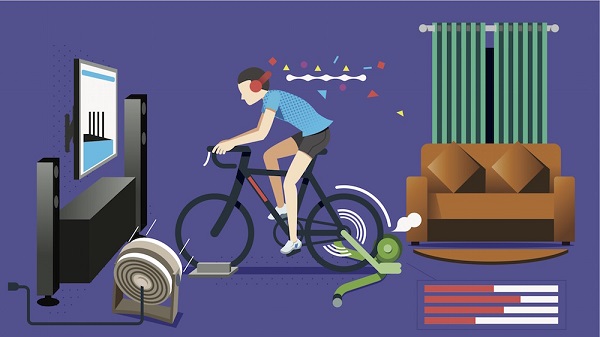The Future of Fitness Ecommerce

A survey suggests fitness ecommerce may be here to stay.
The Covid-19 pandemic has altered nearly every facet of life since it began its vicious spread in the United States back in March, but among its most dramatic and immediate transformations has been the way that we exercise.
Seemingly overnight, the country went from jam-packed gyms and fitness studios with endless waitlists to doing yoga in our living rooms and weightlifting bottles of wine. Over the last six months, gyms across the country have closed, reopened, and in some cases, closed again, but even as case numbers decreased in most states and gyms prepared to reopen for good, the pandemic has had a lasting effect on the fitness industry, and many of its trends appear to be here to stay.
A recent study conducted by digital protection agency Red Points surveyed U.S. fitness consumers, and its findings suggest that the rapid rise of fitness ecommerce will only continue.
Following a McKinsey survey that showed 27 percent of Americans were increasing their exercise time at home and that the online fitness product business was consequently booming, Red Points surveyed 1,000 shoppers who purchased fitness goods online in the last three months to gain some insight into new exercise trends and habits. Participants were asked about their research process, buying habits, and importantly, any experience they had with buying counterfeit goods.
While some people began working out at home long before “coronavirus” was a part of our collective vocabulary, as shown by the rising popularity of exercise apps and brands like Peloton, the survey found that many former gymgoers started doing at-home workouts during lockdown.
When asked where they plan to work out for the remainder of 2020, only 15 percent said they would consider going back to the gym when it’s open and safe, while a whopping 51 percent said they plan to work out at home for the rest of the year and around 21 percent said they will work out outdoors.
This means that more than 70 percent of respondents are relying on themselves to stay active, and they’re in need of equipment and products to support them and keep them on track.
Red Points found that shoppers are buying more fitness equipment online as a result of the pandemic, spending an average of $265 more on the category since stay-at-home orders began, and those who see it as a long-term investment have spent even more.
When searching for such items, consumers said they were driven most by quality, then affordability, and then design. Despite what the many backorders on dumbbells and yoga mats might suggest, the most common fitness products people have purchased during this time fall under exercise apparel and accessories (e.g. resistance bands, ropes, sneakers). The next most common category was workout devices, like indoor bikes and treadmills, followed by yoga and flexing accessories, like mats and TRX suspensions; bicycle and motorbike apparel, including spin shoes; and boxing gear. Weights were actually the least popular online purchase, with only 20 percent of respondents having bought them, but that could be attributed to the shortages and skyrocketing prices during the pandemic, especially their comparatively high shipping costs.
The survey also showed how heavy a role social media and influencers play in the fitness ecommerce experience. Unlike those of other product categories, exercise industry customers appear to rely predominantly on word of mouth when they buy equipment, but over 60 percent of people said they also use social media as a research tool, and online influencers weren’t far behind with 50 percent of people looking to their expertise during the process. Many shoppers are buying from traditional marketplaces, particularly Amazon and eBay, but almost 30 percent of respondents purchased through social media while only 24 percent bought through a brand website.
These new consumer buying habits mean that it’s tougher than ever to determine product authenticity, and bad actors are capitalizing on this vulnerability by providing fake reviews on platforms like Amazon in hopes that they will influence shoppers’ decisions. The presence of counterfeit fitness goods seems to have climbed during the pandemic, following the soaring demand for at-home equipment in recent months, and around 50 percent of people had purchased fakes during this time (28 percent knowingly; 22 percent by accident). Fake workout devices led the way, but all product categories had instances of counterfeit goods.
Importantly, the survey found that when consumers do find fake fitness equipment from a popular brand, they would blame the fake on the brand, and 21 percent said they would not buy from said brand in the future. Counterfeits, it appears, not only harm consumers but can also damage the reputations and success of brands, so it’s crucial that brands in the fitness space protect themselves in any way possible.



